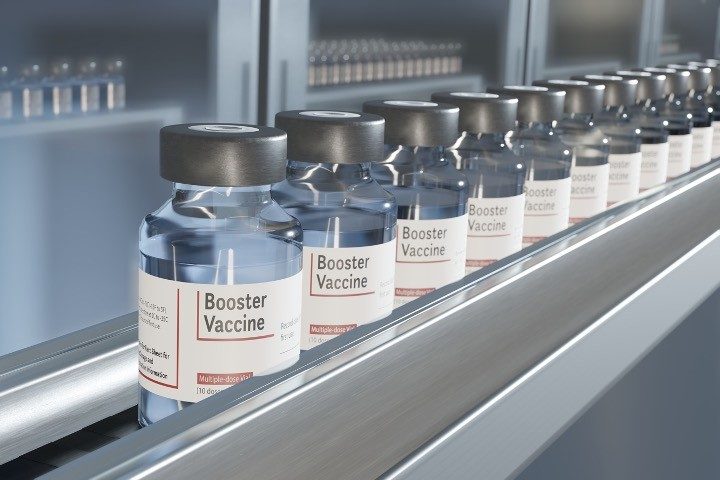
Vaccine advisors to the U.S. Centers for Disease Control and Prevention (CDC) seem to be at odds with the agency on whether to recommend people take a second Covid vaccine booster, or fourth dose, out of safety and efficacy concerns about the measure. For immunocompromised Americans, a second booster would actually be a fifth shot, since the CDC recommended last summer that this cohort receive three doses as part of their primary series.
Weeks after the CDC recommended a second booster for people ages 50 and over, its Advisory Committee on Immunization Practices (ACIP) discussed the medical necessity of additional booster doses. If that sounds backwards, it is because it is.
On March 29, the Food and Drug Administration (FDA) authorized a second booster of the mRNA vaccine from either Pfizer-BioNTech or Moderna for people ages 50 and up four months after their first one. The FDA, however, skipped the regular consultation with its Vaccines and Related Biological Products Advisory Committee (VRBPAC), which evaluates vaccines’ safety, efficacy, and appropriate use by reviewing and verifying the data provided by the vaccine’s manufacturer.
That same day, the CDC signed off on the FDA’s action, saying these individuals “may” get a second mRNA booster if they chose to. Much like its sister agency, the CDC announced the recommendation without consulting with its outside advisors from ACIP, who typically hold a public meeting to review the evidence that the shots are indeed needed to preserve public health.
During the ACIP meeting on Wednesday, the advisors focused primarily on the safety of additional mRNA boosters by analyzing real-world data.
As with the primary series of Moderna and Pfizer/BioNTech, myocarditis and pericarditis continue to be the biggest safety signals with the boosters. That risk, however, was lower than with the second dose of these vaccines, the experts noted.
It is remarkable that, concerning Moderna, the risk of myocarditis, or heart inflammation, appears to be off the charts after the primary vaccination.
According to the FDA documents that were used to grant Moderna’s full approval, among males aged 18 to 25, the rate of myocarditis following Moderna’s primary series was 148 per million males vaccinated.
As reported by The New American on the matter,
The CDC’s baseline for myocarditis in males aged 18 to 25 is one to eight cases per year. There are some 30.8 million Americans of both sexes in that age group, so the number of males would be roughly 15.4 million. Using the FDA’s estimate above of 148 per million, if every young man in the age group receives the Moderna shots, 2,280 will likely develop myocarditis.
Notably, young females also increasingly developed myocarditis following mRNA vaccinations, as did men in older age groups, as shown in the CDC chart.
As of April 21, the U.S. Vaccine Adverse Event Reporting System (VAERS) contains nearly 39,000 cases of myocarditis/pericarditis associated with Covid vaccines. It should be kept in mind that VAERS is officially recognized to be underreported by a factor of 10.
The Pfizer shot was also linked to an elevated risk of heart complications by the CDC last year.
According to an ACIP presentation, the median age of those developing myocarditis after the third dose is 23. In 91 percent of the cases, men were the victims. The symptoms typically develop on the third day after the shot. As seen from the ACIP chart, young men who received a third dose of Pfizer were more likely to develop myocarditis than those who received Moderna.
As for pericarditis, the median age of those who developed it after their third dose was 46. Men accounted for 47 percent of the cases, while women accounted for 53 percent. The onset of the symptoms was observed on the third day after the vaccination.
During the meeting, the advisors reviewed the VAERS reports of all adverse events. According to the chart, more than 93 million boosters were administered, and over 52,000 reports of adverse events were received. Of those side effects, 10 percent, or 5,049, were considered “serious.” The majority of the reactions, or 65 percent, were observed in women.
Among the serious events reported (not mutually exclusive), the top five were: Covid-19, Sars-CoV-2 positive test, dyspnoea (shortness of breath or breathlessness), death, and chest pain.
According to the ACIP, nearly 70 percent of people aged 18 and up who used the v-safe app and took Pfizer reported an injection site reaction after receiving their first, second, and third doses.
“Any systemic reaction,” including fever, fatigue, headache, and chills, was reported in nearly 60 percent of cases following the booster.
Sixteen percent were unable to “perform daily activities” after the booster, and seven percent could not work.
All of the numbers were higher for younger people aged between 12 and 17. More than 80 percent of the recipients of the booster had an injection site reaction, and 77 percent had a systemic reaction; 26 could not do their daily activities.
The data was troubling for Moderna, which is administered to 18-year-olds and older. For example, more than 70 percent had injection site reactions, more than 60 percent had systemic reactions, and 20 percent of those who received a booster were unable to perform their routine.
Then, it appears that the fourth/fifth boost does not help much in preventing infection and severe Covid outcomes.
When discussing the efficacy of the additional booster, Dr. Sara Oliver, lead for the Covid-19 vaccines ACIP Work Group, cited data from Israel, which has already implemented a fourth-dose program. She noted that the benefits of receiving a fourth dose were lower than those associated with the initial vaccination and a first booster.
Oliver also said that those who have recently contracted Covid did not need to rush for the fourth booster, and should wait until at least the fall.
The evolution of the coronavirus, she added, suggests that a new formulation of the shot will be needed.
No voting was held on updating the current recommendations.





